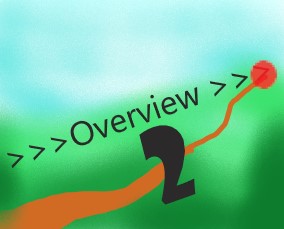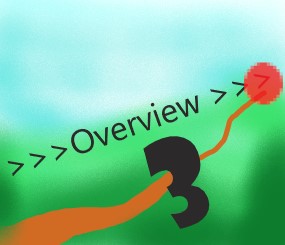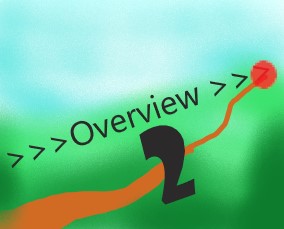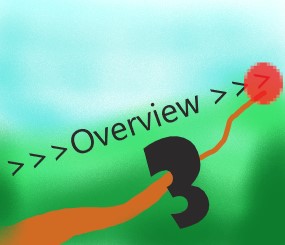A Quick Flyby
A Quick Flyby
LTCOVID.com
Thanks for visiting!
To translate this page, select your
language from the dropdown menu below:
Sometimes there isn't time or energy to listen to a good story.
When a screen writer is "pitching" his scenario to a potential producer, director, or star,
a 30 second (sometimes if very gracious, 3 minutes) time limit is imposed on the presentation.
Such a practice, while certainly a potential source of stress, may favor eloquence.
Let's try it here. A flyby in 5 quick passes at our subject of "long-term" COVID-19, before landing at the rest of the information to be shared.
In this overview, links to supportive material that would seem logical have been omitted deliberately, with the intention of keeping the reader on course.
In the actual content, links where needed are quite present.
The conclusions reached at the time of your arrival at #5 in this overview are based not on a hunch, but on careful analysis of the results of this survey.
This should take you 7.5 minutes.
1. "Let Me Tell You About Our Questionnaire"
(click the image below)
Please fasten your seat belt.
<<<< Home
A Quick Flyby: Our Questionnaire
LTCOVID.com
Thanks for visiting!
To translate this page, select your
language from the dropdown menu below:

1. "Let Me Tell You About Our Questionnaire"
- This effort grew out a personal desire to turn all the negatives of a pandemic, into something positive.
- Those presenting with "long-term" COVID-19 and its medically uncommon findings attracted attention for someone with my background.
- That includes a career in Medicine, Surgery & related Research that began in 1974.
- This accompanied by a persistent desire to offer help through better understanding.
- Worth the effort? Current estimates of those with a prolonged course of COVID-19 are at least 10% to 20%, and up to 50% of all those with COVID-19. The 50% estimate is probably high, but too early to tack that down more precisely. On December 15, 2020, Johns Hopkins CSSE announced 72,850,994 global cases. So 10% would be over 7 million people involved.
- As the Boys Scouts motto on my uniform used to read: "Be Prepared."
------
- To better understand "long-term" COVID-19 required gathering better information about it.
- Many of those presenting with this variant of the COVID-19 illness were available for interviewing.
- That interview took place in the form of an online questionnaire:
- 60 questions
- 30 minutes to respond, on average
- questions selected based on established principles & practice of medical history taking
There you have it. Part 1 of the Overview complete.
--------
2. "Let Me Tell You About The Answers"
(click the image below)
<<<< Home
A Quick Flyby: The Answers
LTCOVID.com
Thanks for visiting!
To translate this page, select your
language from the dropdown menu below:

2. "Let Me Tell You About The Answers"
- 136 respondents presenting with "long-term" COVID-19, completed the questionnaire from September to November of 2020.
- Answers were collected, individually commented upon and summarized for each of the 60 questions.
- Answers were combined to allow their presentation as averages (means ± standard deviations).
- Answers are also presented as numerical and percentage values where appropriate.
- Answers are also presented as statements of advice written by these respondents to others suffering the same illness. Advice is also given to those with whom they had contact in their healthcare system.
- Comparisons were made of several subgroups, identifying differences based on age, gender, race, body size and the presence or absence of certain symptoms and habits (e.g., smoking, nutritional supplement use).
- 78 such subgroups for specific subjects (or 57 variables to be exact) were identified by regrouping the responses. For each subject, their responses to the 60 questions were reviewed.
That summary of the answers completes Part 2 of this Overview.
--------
3. "Let Me Tell You About What We Learned"
(click the image below)
<<<< Home
A Quick Flyby: What was learned
LTCOVID.com
Thanks for visiting!
To translate this page, select your
language from the dropdown menu below:

3. "Let Me Tell You What Was Learned"
- It would seem that those suffering with "long-term" COVID-19 have a cellular energy problem.
- Most symptoms expressed by these respondents suggest a potential link to mitochondria.
- These "power houses" of the cell, were hijacked by viral particles for their own reproductive use.
- These cellular organelles were left if not permanently damaged, badly underserved by the system designed to bring them substrate for generation of ATP; the body's ultimate source of renewable energy.
- One model of this might be a water wheel that has hit on a nearly complete and very long dry spell.
- If this hypothesis seems far fetched, it is not. It is quite adequately supported by the "peer-reviewed" Medical and Scientific Literature. Those references are presented.
- The evolution from respondent answers to this hypothesis also supports a second hypothesis that this is a reversible process, and that the cellular energy deficit can be replenished. This improvement to be expected only after the "machinery" (Electron Transport Chain) that supplies the "turbine" (ATP Synthase) has been repaired or refueled.
This Summary of What Was Learned, completes Part 3 of this Overview.
--------
4. "Let Me Tell You About Where the Needed Energy Can Be Obtained"
(click the image below)
<<<< Home
A Quick Flyby: The Needed Energy is Light (E = h · nu)
LTCOVID.com
Thanks for visiting!
To translate this page, select your
language from the dropdown menu below:

4. "Let Me Tell You About The Light"
- It's both red and near-infrared light of specific wavelengths.
- It usually comes from the sun. If you go out, you get some every day. At the beach, you get more.
- It is not the better known light that tans or burns. Nor the one that shows you leaves are green and lights your way along your path. But lilke all of those, it is also provided free by our sun.
- Devices are available at a reasonable price that allow use of this light locally, at home.
- It provides energy because it has a frequency. And of course, E = h·v ...
- Definitions: The frequency is often given the name "nu", a Greek letter whch looks a lot like a "v". Planck's constant is usually called "h". Its value is about 6.626*10^-34 Joules/ Hz. A Joule is a unit of energy, and a Hertz is a unit of frequency, so when you multiply a frequency of these lights by h you get an energy. If you keep the light on 1 minute, you get an energy density. (More explanation than that, and this is no longer a flyby overview).
- In many different applications, these red and near-infrared sources of energy have been proven safe.
- It can be used to transfer energy from one form (light) into another: ATP ( through activation of specific energy-related cellular proteins).
- It has been used to heal wounds, treat traumatic brain injury, treat depression and many other uses.
- It has already been used in treatments applied to patients with COVID-19.
- It hasn't caught on yet and needs a little push, a jump start, to broaden its application to the "long-term" variant of COVID-19, but to other uses as well, also related to that illness.
This Summary of Energy from Light, completes Part 4 of this Overview.
--------
5. "Let Me Tell You About How We Will Learn If This Works, Or Doesn't"
(click the image below)
<<<< Start of the flyby
<<<< Home





